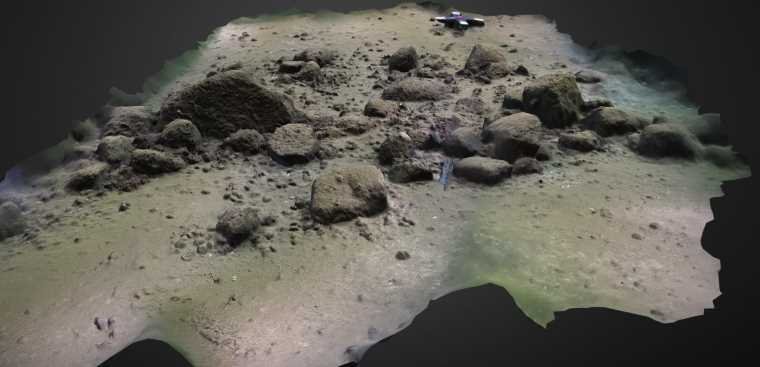Stone Age Megastructure Found at the Bottom of the Baltic Sea
Story by Isaac Schultz • 8h

A 3D model of a section of the giant wall.
© Image: Philipp Hoy, Rostock University
Divers working off the coast of Rostock, Germany, have found the broken-up remains of a wall on the bottom of the Baltic Sea. Researchers believe the Stone Age construction is over 10,000 years old, potentially making it the oldest human megastructure in Europe, and was likely used to herd prey during hunts.
The wall dates to a time when the local sea level was lower. Around 8,500 years ago, the sea levels rose and swallowed the structure, which now sits at a depth of 69 feet (21 meters). As the team notes in their paper describing the find, published this week in the Proceedings of the National Academy of Sciences, the wall is “thrilling” not just for its age but because of its sociocultural implications.
The paper cites the words of Ashley Lemke, an archaeologist at the University of Texas at Arlington, who noted that “permanent hunting structures anchor [the foragers] to certain places on the landscape and create sociopolitical and economic tensions concerning ownership, territoriality, leadership, labor aggregation, group size, and other social dynamics.” In other words, the wall’s discovery indicates that a certain group (or perhaps multiple groups) had enough claim to the now-submerged land, and enough human power, that they were able to construct and make use of massive architecture.

Data showing the overall shape of the wall and some of the largest rocks in it.
© Image: Geersen et al. PNAS 2024
More:
https://www.msn.com/en-us/news/technology/stone-age-megastructure-found-at-the-bottom-of-the-baltic-sea/ar-BB1ioD4k

